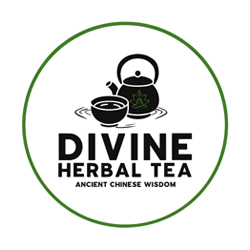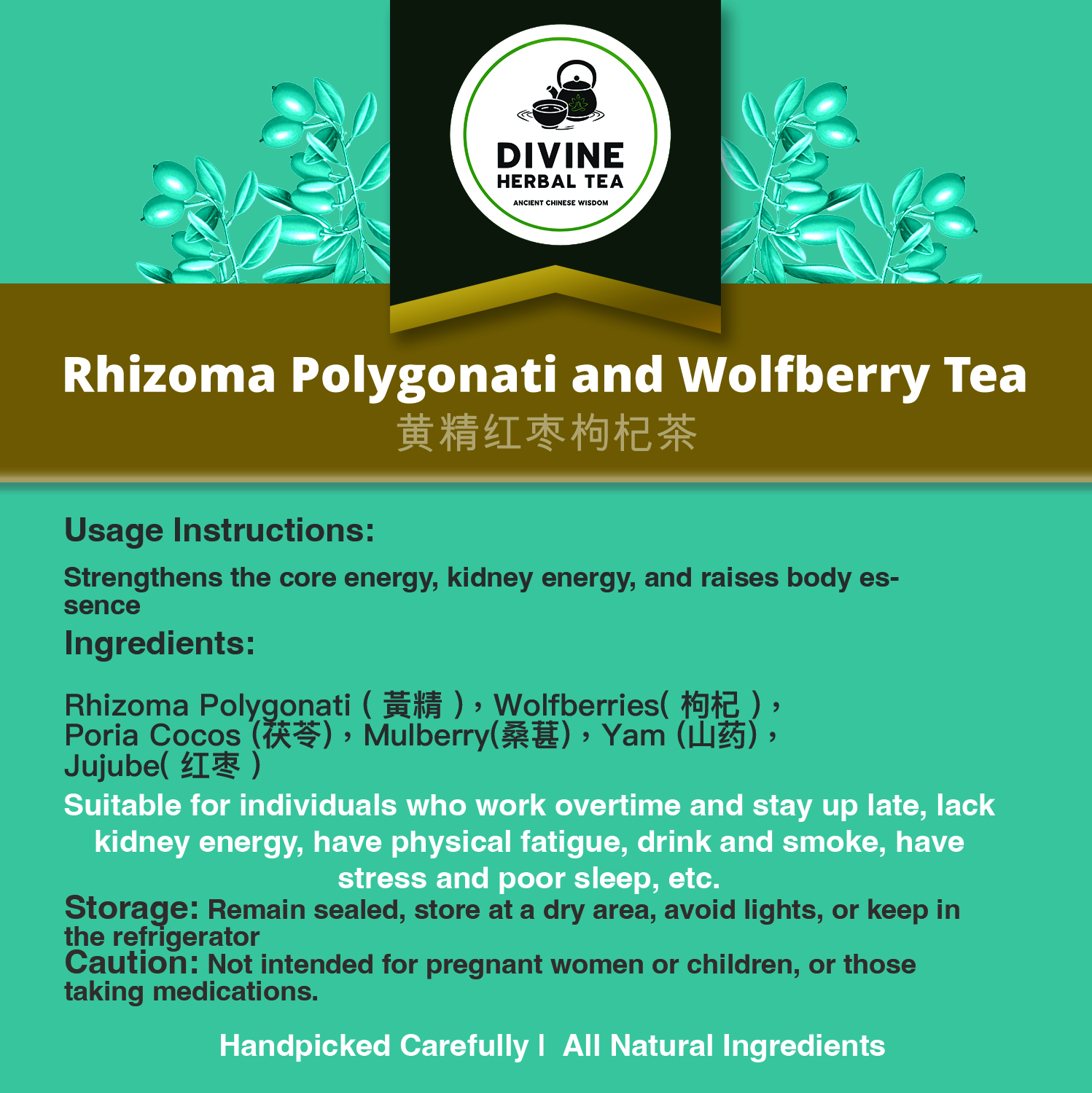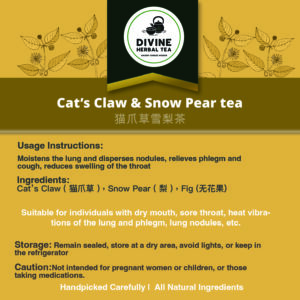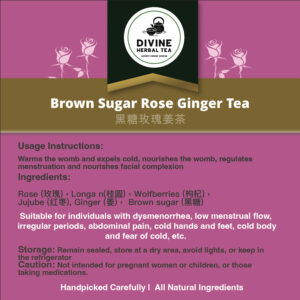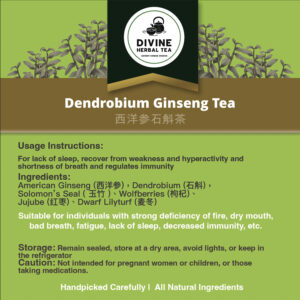“Rhizoma Polygonati,” known as “黃精” (huáng jīng) in Chinese and commonly referred to as “Solomon’s Seal Rhizome,” is a medicinal plant with a long history of use in traditional Chinese medicine (TCM) and other traditional healing systems. It is derived from the rhizomes (underground stems) of plants belonging to the Polygonatum genus, particularly Polygonatum sibiricum and Polygonatum odoratum.
Here are some important aspects of Rhizoma Polygonati (黃精) and its uses:
Traditional Medicine: Rhizoma Polygonati has been used for centuries in TCM and other traditional healing practices for its potential health benefits.
Qi and Yin Tonic: In TCM, Rhizoma Polygonati is considered a Qi and Yin tonic. It is believed to nourish and balance the body’s vital energy (Qi) and Yin energies, which are associated with cooling, moistening, and calming properties.
Lung and Stomach Support: Rhizoma Polygonati is often used to support lung and stomach health. It is believed to moisten the lungs, promote lung function, and aid digestion.
Nourishing Yin: Rhizoma Polygonati is used in TCM for conditions associated with Yin deficiency, such as dryness, thirst, and hot flashes.
Sore Throat Relief: Rhizoma Polygonati is sometimes used in herbal formulas to soothe sore throats and alleviate discomfort.
Joint Health: Rhizoma Polygonati is believed to have potential benefits for joint health, and it may be included in formulas for conditions like arthritis.
Culinary Use: In some cultures, the young shoots of certain Polygonatum species are consumed as a food source, particularly in spring. However, the rhizomes used for medicinal purposes are typically processed and prepared differently.
Safety and Precautions: Rhizoma Polygonati is generally considered safe when used as part of traditional herbal formulas under the guidance of a qualified herbalist or healthcare professional. As with any herbal remedy, it’s important to use it under appropriate supervision, especially if you have underlying health conditions or are taking medications.
“Wolfberries,” also known as goji berries, are the fruits of the Lycium barbarum or Lycium chinense plant. In Chinese, they are called “枸杞” (gǒuqǐ), and they have a long history of use in traditional Chinese medicine and cuisine. Wolfberries are small, red berries that are known for their rich nutritional content and potential health benefits.
Here are some key aspects of wolfberries (枸杞) and their uses:
- Nutrient-Rich: Wolfberries are packed with nutrients, including vitamins (such as vitamin C and vitamin A), minerals (such as iron and zinc), antioxidants (such as zeaxanthin and beta-carotene), and essential amino acids.
- Traditional Medicine: In traditional Chinese medicine (TCM), wolfberries are considered a “tonic” herb that can nourish and strengthen the body. They are often used to support liver and kidney health, improve vision, and boost overall vitality.
- Antioxidant Properties: The antioxidants in wolfberries help protect cells from oxidative stress and damage caused by free radicals.
- Eye Health: Wolfberries are known for their potential benefits to eye health. They contain high levels of zeaxanthin, which is associated with supporting healthy vision.
- Immune Support: The vitamin C content in wolfberries contributes to a healthy immune system.
- Energy and Stamina: Wolfberries are considered an adaptogen in TCM, believed to support the body’s ability to handle stress and promote energy and stamina.
- Culinary Use: In Chinese cuisine, wolfberries are used in a variety of dishes, both savory and sweet. They can be added to soups, teas, porridge, and desserts.
- Dried Form: Wolfberries are often dried before consumption. They can be eaten as a snack, added to recipes, or steeped in hot water to make a tea.
- Superfood Status: Wolfberries have gained popularity as a “superfood” due to their impressive nutrient profile and potential health benefits.
- Cultural Significance: In Chinese culture, wolfberries are sometimes associated with longevity and used in celebrations, particularly during the Chinese New Year.
“Jujube” is the common name for the fruit of the Ziziphus jujuba tree. In Chinese, it is known as “红枣” (hóng zǎo), and it is commonly referred to as “red date.” Jujube is a popular fruit in China and other Asian countries, and it has been used for its nutritional and medicinal benefits for centuries.
In Chinese cuisine and traditional medicine, jujube is highly regarded for its various properties and uses. It’s often consumed as a dried fruit or used to make teas, soups, and other dishes. The Chinese characters “红枣” literally translate to “red date,” highlighting the resemblance of jujube to dates in appearance.
In addition to the benefits mentioned earlier, here are some ways jujube (红枣) is used in Chinese culture:
Nourishing Blood: Jujube is believed to have nourishing properties, particularly for improving blood circulation and supporting overall vitality.
Qi (Vital Energy) Tonic: In Traditional Chinese Medicine (TCM), jujube is considered a Qi tonic. It is thought to replenish and harmonize the body’s vital energy.
Herbal Formulas: Jujube is often included in various herbal formulas in TCM to enhance the effects of other herbs and promote balance in the body.
Strengthening the Spleen: In TCM, jujube is associated with the spleen meridian and is used to strengthen digestion and support the spleen’s functions.
Tonifying Herbs: Jujube is sometimes combined with other tonifying herbs in traditional formulas to enhance their benefits.
Balancing Yin and Yang: Jujube is considered a neutral fruit that can help balance the body’s Yin and Yang energies.
Culinary Use: Jujube is used in various Chinese culinary dishes, both savory and sweet. It can be added to soups, stews, porridge, and desserts.
Candied Jujubes: Jujubes can be candied and enjoyed as a sweet treat.
Symbolic Significance: Jujubes are also associated with festivals and celebrations in Chinese culture, often symbolizing happiness and good wishes.
“Poria Cocos,” known as “茯苓” (fú líng) in Chinese, is a type of medicinal mushroom commonly used in traditional Chinese medicine (TCM) and other traditional healing practices. It is derived from the sclerotium (a compact mass of fungal hyphae) of the Poria cocos fungus. Poria has been used for centuries for its potential health benefits and is considered one of the fundamental herbs in TCM.
Here are some important aspects of Poria Cocos (茯苓) and its uses:
Traditional Medicine: Poria Cocos is a widely used herb in TCM, where it is valued for its potential to promote balance and support various aspects of health.
Spleen and Kidney Health: In TCM, Poria is often used to support the spleen and kidney organs, which are believed to play essential roles in digestion, water metabolism, and overall vitality.
Diuretic Properties: Poria is believed to have diuretic properties and is used to promote urination and address issues related to water retention.
Calming Effects: Poria is sometimes used to help calm the mind and promote relaxation, making it useful for managing stress and sleep disturbances.
Digestive Support: Poria is used in TCM to support digestion, particularly for individuals with conditions related to dampness and stagnation in the body.
Immune Modulation: Some research suggests that Poria may have immune-modulating effects, potentially supporting the body’s immune response.
Gentle Herb: Poria is often considered a gentle and mild herb that can be suitable for long-term use.
Culinary Use: In some Asian cuisines, Poria is used in culinary dishes and soups, particularly in traditional Chinese herbal cuisine.
Safety and Precautions: Poria Cocos is generally considered safe when used under the guidance of a qualified healthcare professional or TCM practitioner. As with any herbal remedy, it’s important to use it appropriately, especially if you have underlying health conditions or are taking medications.
Processing and Formulations: Poria is often used in combination with other herbs in traditional formulas to enhance its effects and promote balance within the body.
It’s important to remember that the use of Poria Cocos (茯苓) is deeply rooted in traditional knowledge and practices. If you’re interested in exploring its potential benefits, consult with a knowledgeable healthcare professional or licensed herbalist who can guide you based on your individual health needs and circumstances.
“Mulberry,” known as “桑葚” (sāng shèn) in Chinese, refers to the fruits of the mulberry tree, scientifically known as Morus. Mulberries come in various colors, including red, black, and white, and they are widely appreciated for their taste, nutritional value, and potential health benefits.
Here are some important aspects of mulberries (桑葚) and their uses:
Nutrient-Rich: Mulberries are packed with nutrients, including vitamins (such as vitamin C, vitamin K, and B vitamins), minerals (such as iron and potassium), dietary fiber, and antioxidants.
Varieties: There are different types of mulberries, each with its own unique flavor and characteristics. Common varieties include red mulberries, black mulberries, and white mulberries.
Sweet Flavor: Mulberries have a naturally sweet flavor that can vary based on the variety and ripeness of the fruit. They are often enjoyed as a fresh snack.
Culinary Use: Mulberries are used in various culinary dishes, including desserts, jams, pies, and smoothies. They can also be dried and used as a nutritious snack.
Health Benefits: Mulberries are believed to offer several potential health benefits, including:
Antioxidant Protection: Mulberries are rich in antioxidants, including anthocyanins, which help protect cells from oxidative stress and inflammation.
Digestive Health: The dietary fiber in mulberries can support digestive health and regular bowel movements.
Blood Sugar Regulation: Some studies suggest that mulberries may help regulate blood sugar levels, making them suitable for individuals with diabetes.
Heart Health: The fiber, potassium, and anthocyanins in mulberries may contribute to heart health by promoting healthy blood pressure and cholesterol levels.
Immune Support: The vitamin C content in mulberries can support a healthy immune system.
Dried Mulberries: Dried mulberries are a popular snack and can be enjoyed on their own or added to cereals and yogurt.
Traditional Medicine: In traditional Chinese medicine (TCM), different parts of the mulberry tree, including leaves and bark, have been used for their potential medicinal properties.
Silkworms’ Food Source: Mulberry leaves are the primary food source for silkworms, which are used in the production of silk.
Cultural Significance: Mulberries hold cultural importance in various regions and are often associated with folklore and traditions.
When incorporating mulberries into your diet, consider sourcing them from reputable sources and enjoying them in moderation as part of a balanced diet. If you have specific health concerns or are taking medications, it’s a good idea to consult with a healthcare professional before making significant changes to your diet.
“Yam,” known as “山药” (shān yào) in Chinese, refers to the tuberous root of various plant species in the Dioscorea genus. Yams are starchy vegetables that are commonly used as a food source in many cultures around the world. They come in different varieties, sizes, and colors and are valued for their nutritional content and potential health benefits.
Here are some important aspects of yam (山药) and its uses:
Nutrient-Rich: Yams are rich in carbohydrates and provide dietary fiber, vitamins (such as vitamin C and B vitamins), and minerals (such as potassium and manganese).
Starchy Food: Yams are considered starchy vegetables and are a good source of complex carbohydrates, making them a source of sustained energy.
Varieties: There are several varieties of yams, including white yams, yellow yams, and purple yams. Different varieties may have slightly different flavors and textures.
Culinary Use: Yams are versatile in cooking and can be prepared in various ways, including boiling, steaming, roasting, frying, and mashing. They are used in both savory and sweet dishes.
Texture and Flavor: Yams have a creamy and slightly sweet texture when cooked. The flavor can vary depending on the variety and how they are prepared.
Health Benefits: Yams offer several potential health benefits:
Dietary Fiber: Yams contain dietary fiber, which supports digestive health and can help maintain regular bowel movements.
Vitamins and Minerals: Yams provide important vitamins and minerals that are essential for overall health and wellness.
Antioxidants: Some yam varieties, particularly purple yams, contain antioxidants that help protect cells from oxidative damage.
Blood Sugar Regulation: Yams have a relatively low glycemic index (GI) and may help regulate blood sugar levels.
Traditional Medicine: In traditional Chinese medicine (TCM), yams are sometimes used for their potential health benefits, such as supporting digestion and strengthening the spleen and stomach.
Yam Desserts: Yams are used in various desserts and sweets in different cultures. Purple yams, for example, are often used to create colorful and flavorful desserts.
Cultural Significance: Yams have cultural significance in many regions and may be featured in traditional dishes and celebrations.
It’s important to note that while yams are generally considered a healthy food, their calorie and carbohydrate content should be taken into consideration, especially for individuals who need to manage their blood sugar levels or caloric intake. If you have specific dietary restrictions or health concerns, consult with a healthcare professional or registered dietitian before making significant changes to your diet.
